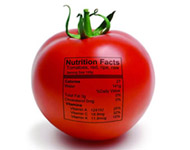Nutrition and Health Sciences, Department of

Department of Nutrition and Health Sciences: Faculty Publications
Document Type
Article
Date of this Version
1995
Abstract
The objectives of this project were to detennine the omega-3 fatty acid (ω-3 FA) consumption of low-income pregnant women, and to identify food sources of ω-3 FA in their diets. Thirty women provided three days of dietary intake that were analyzed using the Food Processor Plus computer program. Mean daily consumption of ω-3 FA was 1.060 ± 0.030 g/day. The major form of the ω-3 FA was α-linolenic acid (α-LNA; 93%), with less from eicosapentanoic acid (EPA; 2%), and docosahexanoic acid (DHA; 5%). Foods that provided the most α-LNA were fats, oils, salad dressings, and milk products. EPA and DHA were provided in fish, seafood, chicken, and eggs. Nearly one-half of the women in this study consumed < 75% of the Canadian Recommended Nutrient Intakes for ω-3 FA. We conclude that some low-income pregnant women in the Midwest consume diets low in ω-3 FA. There is a need for agriculture and nutrition research on the development of new food products that provide ω-3 FA.


Comments
Published in Journal of Agromedicine, Vol. 2(4) 1995. Copyright © 1995 by The Haworth Press, Inc. Used by permission.